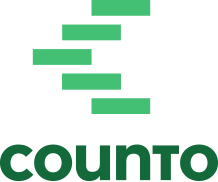Key Ecommerce Accounting Best Practices
In the bustling world of ecommerce, maintaining accurate financial records and staying compliant with regulations are essential for success. This blog post delves into key ecommerce accounting components and best practices, helping online sellers navigate their financial landscape with confidence.
Common Challenges Online Sellers Face
1. High Volume of Transactions
Ecommerce businesses often handle a high volume of transactions, which can be overwhelming without proper systems in place. Managing these transactions accurately is crucial to maintaining financial health and compliance.
2. Inventory Management
Effective inventory management is essential but can be difficult for online sellers. Keeping track of inventory levels, understanding what’s selling, and maintaining accurate stock records are all vital for smooth operations.
3. Cash Flow Monitoring
With many online sales involving credit transactions, closely monitoring cash inflows and outflows is essential. Ensuring positive cash flow is critical for the sustainability of your business.
4. Accounting Software Integration
Integrating your accounting software with your ecommerce platform can pose technical challenges. Seamless integration is necessary for automating processes like invoicing, tax calculations, and inventory updates.
5. Regulatory Compliance
Staying compliant with local accounting standards and regulations, such as the Singapore Financial Reporting Standards (SFRS), is crucial. Small businesses need to maintain proper records for at least five years, as mandated.
6. Limited Resources
Small ecommerce businesses often have limited staff and resources, making it challenging to dedicate the necessary time and effort to accurate bookkeeping and accounting practices.
What is Ecommerce Accounting?
Ecommerce accounting encompasses the recording, tracking, and management of financial transactions specific to online businesses. Unlike bookkeeping, which merely records financial transactions, ecommerce accounting interprets these records to provide insights into the company’s overall financial health, helping inform future business decisions.
✅ Counto’s accounting plans for online sellers offer multicurrency accounting, unlimited transactions, GST submissions, and tax filing—all at no extra charge. You’ll receive expert support from a dedicated team, including a bookkeeper, Chartered Accountant, tax specialist, and Customer Success Manager. Explore our plans now.
Components of Ecommerce Accounting
1. Purchase and Sales Orders
- Purchase Orders: These documents are issued by buyers detailing the requirements from their suppliers. For example, a retailer may send a purchase order to a manufacturer for a new batch of products.
- Sales Orders: Issued by sellers, sales orders outline the details of the sale, including products sold, quantities, delivery information, and payment methods. They are often generated in response to purchase orders.
2. Accounts Payable and Receivable
- Accounts Payable: Represent unpaid invoices your business owes to suppliers and vendors.
- Accounts Receivable: Funds owed to your business by customers, representing the income yet to be received.
3. Cost of Goods Sold (COGS)
COGS includes all costs directly related to producing goods sold by your business, such as materials, labor, and storage. This metric is crucial for calculating gross profit by subtracting COGS from total revenue.
4. Sales Tax
Managing sales tax is critical, especially for businesses selling in multiple regions with different tax rates. For example, you need to know when to register for sales tax in a foreign country to ensure compliance.
Choosing the Right Accounting Method
1. Cash Accounting
This method records revenue and expenses only when they are actually received or paid, offering a real-time snapshot of your financial situation. It’s straightforward but may not account for future income or obligations accurately.
2. Accrual Accounting
Accrual accounting records income and expenses when they are incurred, regardless of when the money is exchanged. This method provides a more accurate long-term view of your financial health but requires meticulous tracking and may lead to paying taxes on income not yet received.
3. Hybrid Method
A combination of both cash and accrual accounting, using accrual for significant financial events and cash for daily operations, offers a balanced approach.
Best Practices for Small Business Ecommerce Accounting
1. Choose the Right Software
Select cloud-based accounting software tailored for ecommerce that integrates seamlessly with your other business tools. This ensures efficient management of sales, expenses, and taxes, reducing the likelihood of errors.
2. Automate, automate, automate
Automate your accounting processes to keep records up-to-date with minimal manual intervention. Automated systems can handle tasks like importing transactions, recording expenses, and generating invoices, freeing you to focus on other aspects of your business.
3. Keep Your Books Up to Date
Regularly update your books to maintain a clear financial picture. Use software that connects bank accounts, scans receipts, and tracks income and expenses to streamline this process.
4. Maintain Accurate Inventory Records
Effective inventory management is vital. Choose between periodic manual counts and perpetual automated tracking based on your business size and complexity to keep your stock levels accurate.
5. Regularly Reconcile Accounts
Reconciliation involves matching your financial records with bank statements and other documents to ensure accuracy. Regular reconciliations help identify and correct discrepancies early.
6. Monitor Cash Flow Closely
Keeping a close watch on cash inflows and outflows is crucial. Positive cash flow indicates financial health, while negative cash flow needs immediate action to avoid issues.
7. Understand Sales Tax Obligations
Stay informed about the sales tax requirements to avoid penalties. For instance, GST is 9% in Singapore and 10% in Australia.
8. Maintain Compliance with Regulations
Adhere to local accounting standards and regulations, such as the Singapore Financial Reporting Standards (SFRS). Keep thorough records for the required period to ensure compliance.
Should You Use Self-Accounting vs. an Accountant Firm?
1. Self-Accounting
Handling your own accounting can save money and give you direct control over your finances. This is feasible for small businesses with straightforward financial activities.
2. Professional Accountants
Hiring a professional accountant can save time and provide expertise, especially beneficial for complex financial situations. Accountants help ensure compliance, offer strategic advice, and manage detailed financial records.
Summary
Implementing these ecommerce accounting best practices can help small businesses maintain accurate financial records, stay compliant, and make informed strategic decisions. Partnering with an experienced ecommerce accounting firm like Counto can further enhance your financial management, providing valuable insights and freeing you to focus on growing your business.
Experience the Counto advantage
Counto is the trusted provider of accounting, tax preparation and CFO services for online sellers and SMEs. Get accounting plans that combine bookkeeping with corporate tax filing to help you stay compliant at an affordable price. To learn more, speak to us directly on our chatbot, email us at [email protected], or contact us using this form.
Here are some articles you might find helpful:







